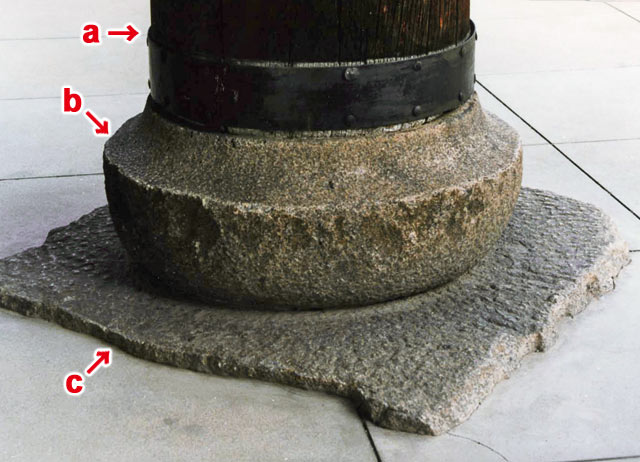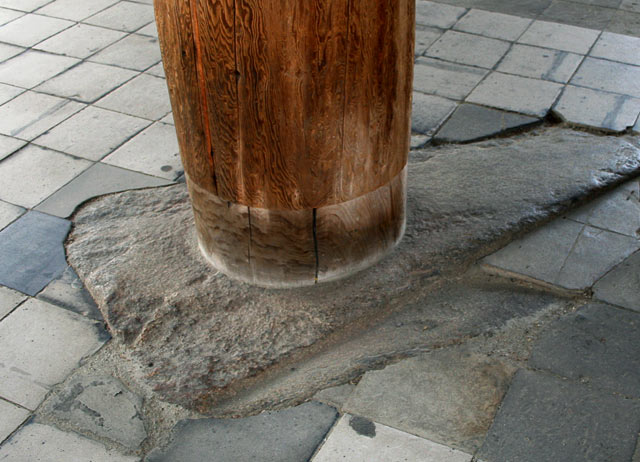Lit.
foundation stone. A base stone which receives the dead load of a pillar.
The upper side of the base stone was made roughly level. Natural and processed
stones both have a mortise *hozoana
ほぞ穴 into which a tenon *hozo
ほぞ, is inserted that extends from the bottom of the pillar. A tenon sometimes
is cut into the base stone to be inserted into a corresponding mortise on
the bottom of the pillar. Some base stones have an extension which serves
as a sill or a ground plate, jifukuza 地覆座. During the 7-8c a porous
limestone called tufa *gyoukaigan
凝灰岩, was used and the developed of stone progressed. From the latter part
of the 8c after floored buildings became common, stone processing declined.
Many natural base stones were cut from andesite, anzangan 安山岩, a
type of volcanic rock and granite, kakougan 花崗岩. A firmly packed
bed of golfball-sized stones underlay base stones in the ancient period.
The use of natural stones for base stones was common until the premodern
age when carefully cut stones were used.
Soseki were often used for
stepping stones *tobi-ishi
飛石, in tea gardens *roji
露地, and in some cases made into a water basin *chouzubachi
手水鉢, when an old temple was destroyed or refurbished. |




